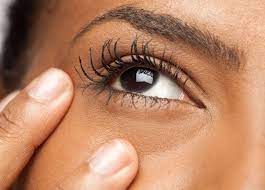Blepharoplasty is a plastic surgery procedure performed to improve the appearance of the eyelids. Patients undergo the procedure if they have disfigurations or defects of the eyelids. It can also be performed to improve a patient’s appearance by reshaping the eyelids.
Table of Contents
Upper eyelid blepharoplasty
Upper eyelid Blepharoplasty, also known as eyelid lift, is a cosmetic surgery that can restore the youthful appearance of your eyes. This procedure removes excess skin and fat from the upper eyelids, which can help you look refreshed and improve your peripheral vision. The procedure is safe and requires minimal recovery time.
This procedure can be performed in the office or operating room. Local anesthetic injections are often used to minimize pain during the procedure. Patients can also take a light sedative before the procedure. In most cases, an upper eyelid blepharoplasty will take about one hour to complete. Patients can often combine this procedure with lower blepharoplasty for optimal results.
Complications of blepharoplasty
Blepharoplasty has become a popular cosmetic surgery, but it is also associated with a variety of potential complications. These complications can range from mild to severe and can require surgical treatment. Some are more serious, and may result in permanent scarring. In some cases, complications may even lead to blindness.
Blepharoplasty can lead to complications including asymmetric appearance, scarring, and infection. Patients can also experience double vision, tearing, numbness, tingling, and dryness after the surgery. Fortunately, these complications are very rare. However, if you suffer from any of these risks, you should consult your doctor immediately. A plastic surgeon is a doctor who specializes in plastic surgery. They perform surgeries on patients’ faces, hands, feet, breasts, and more.
Patients must be evaluated thoroughly before undergoing blepharoplasty. Preoperative assessment is crucial to ensuring that the procedure is successful and that any complications are addressed before the procedure begins. If there is a history of eyelid ptosis, the surgeon may recommend treatment that involves repairing the aponeurosis or stretching the eyelid muscles to make them more symmetrical.
Recovery from blepharoplasty
After undergoing blepharoplasty surgery, the most common side effects are swelling and discomfort. The surgery can also leave patients with blurred vision or dry, watery eyes. Patients are advised to avoid rubbing their eyes during recovery and sleep with their head elevated. They should also use eye drops and apply ice packs to help reduce swelling.
The recovery period after blepharoplasty is generally between 10 and 14 days. However, every patient’s recovery is different. Patients should plan to avoid strenuous activities for the first two weeks after the procedure to allow the eyelids to heal properly. In addition, some bruising will remain for several weeks. Despite this, most patients will be able to return to their normal lifestyle after about two weeks.
The swelling of the lower eyelid usually lasts longer than that in the upper eyelid. It is also called chemosis and makes the eye appear watery. It usually settles on its own, although it is a nuisance for the patient. In some cases, there may be bruising under the conjunctiva (the layer covering the eye) – this can cause bright red haemorrhages.
Cost of blepharoplasty
There are many factors that determine the price of blepharoplasty. These include where you choose to have the procedure performed, the type of procedure and the surgeon’s experience. It is also important to keep in mind the type of recovery the surgery requires. Depending on the cosmetic surgeon level of experience, recovery times and follow-up appointments can vary considerably.
A blepharoplasty procedure is considered a cosmetic procedure that improves the look of the upper eyelids. Patients can choose to have this procedure performed for aesthetic reasons or for medical reasons. Some insurance plans may cover the cost of the procedure. For patients with no insurance coverage, most facilities offer financing options, allowing them to pay in convenient installments. These options help patients get the treatment they need without breaking the bank.

